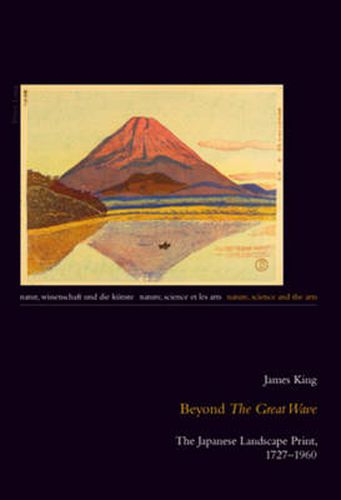Readings Newsletter
Become a Readings Member to make your shopping experience even easier.
Sign in or sign up for free!
You’re not far away from qualifying for FREE standard shipping within Australia
You’ve qualified for FREE standard shipping within Australia
The cart is loading…






The Japanese landscape print has had a tremendous influence on Western art of the nineteenth and twentieth centuries. In Japan and in the West it is often seen as the dominant form in Ukiyo-e, pictures from the floating world. And yet for all its importance, it is a genre whose history has never been written. Beyond The Great Wave is a survey or overview for all those interested in discovering the inner dynamics of one of art history’s most remarkable achievements. However, it is also a quest narrative, in which landscapes and notions of Japan as a homeland are intertwined and interconnected.
Although there has never been a book-length study of the Japanese landscape print in either Japanese or English, a great deal has been written about the two giants of the genre, Hokusai and Hiroshige. From what traditions did these two nineteenth-century artists emerge? Who were their predecessors? What influence, if any, did they have on other Ukiyo-e artists? Can their influence be seen in the shin-hanga and sosaku-hanga artists of the twentieth century? This book addresses these issues, but it also looks at a number of other factors, such as the growth of tourism in nineteenth-century Japan, necessary for understanding this genre.
$9.00 standard shipping within Australia
FREE standard shipping within Australia for orders over $100.00
Express & International shipping calculated at checkout
The Japanese landscape print has had a tremendous influence on Western art of the nineteenth and twentieth centuries. In Japan and in the West it is often seen as the dominant form in Ukiyo-e, pictures from the floating world. And yet for all its importance, it is a genre whose history has never been written. Beyond The Great Wave is a survey or overview for all those interested in discovering the inner dynamics of one of art history’s most remarkable achievements. However, it is also a quest narrative, in which landscapes and notions of Japan as a homeland are intertwined and interconnected.
Although there has never been a book-length study of the Japanese landscape print in either Japanese or English, a great deal has been written about the two giants of the genre, Hokusai and Hiroshige. From what traditions did these two nineteenth-century artists emerge? Who were their predecessors? What influence, if any, did they have on other Ukiyo-e artists? Can their influence be seen in the shin-hanga and sosaku-hanga artists of the twentieth century? This book addresses these issues, but it also looks at a number of other factors, such as the growth of tourism in nineteenth-century Japan, necessary for understanding this genre.